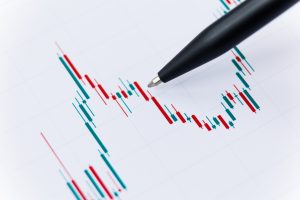Americans are increasingly anxious about the future of the labor market, with new data from the Federal Reserve Bank of New York showing that consumer fears over job loss have reached levels not seen since the early days of the COVID-19 pandemic. The survey, conducted in March, reflects mounting unease amid economic policy uncertainty and concerns over the ripple effects of rising tariffs.
Unemployment Anxiety at a Pandemic-Era Peak
According to the New York Fed’s Survey of Consumer Expectations, respondents now place a 44% probability on the U.S. unemployment rate being higher a year from now—the highest reading since April 2020. Additionally, the perceived chance of personally losing one’s job in the next 12 months rose to 15.7%, the highest in a year.
The findings add to a growing chorus of pessimistic consumer sentiment surveys that contrast sharply with the more resilient “hard” data showing ongoing employment gains. March marked more than four consecutive years of monthly job growth, suggesting the economy remains fundamentally sound—at least for now.
Inflation Expectations Rise Amid Tariff Uncertainty
The survey also revealed a sharp uptick in short-term inflation expectations, rising by 0.5 percentage points to 3.6%, the highest level in 18 months. This increase comes amid widespread concern over President Donald Trump’s aggressive tariff strategy, which has sparked a new phase of the U.S.-China trade war.
Economists warn that new and expanded import tariffs, particularly on semiconductors, electronics, and consumer goods, may exacerbate inflationary pressures in the coming months, further straining household budgets and business input costs.
Long-Term Expectations More Stable
Despite short-term worries, the Fed survey showed that longer-term inflation expectations remain anchored. The three-year outlook held steady at 3%, while five-year expectations edged slightly lower to 2.9%. The Federal Reserve closely monitors these figures, as shifts in inflation expectations can influence both consumer behavior and wage-setting dynamics.
If households expect prices to rise more quickly, they may increase spending now or push for higher wages, potentially leading to a self-reinforcing cycle of inflation. On the supply side, businesses may preemptively raise prices in anticipation of higher costs, fueling further inflation.
Economic Outlook Clouded by Policy Risks
While employment data remains solid, economists note that a prolonged gap between consumer sentiment and economic fundamentals could eventually affect growth. If fears persist, households may begin cutting back on discretionary spending, which could in turn dampen business investment and slow the broader economy.
The widening disconnect between consumer perception and economic performance may be driven by policy uncertainty—including tariffs, inflation risks, and unclear central bank signals—further complicating the outlook.







